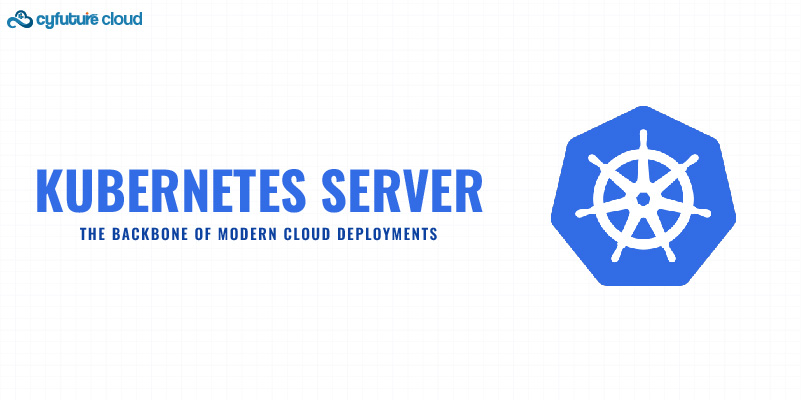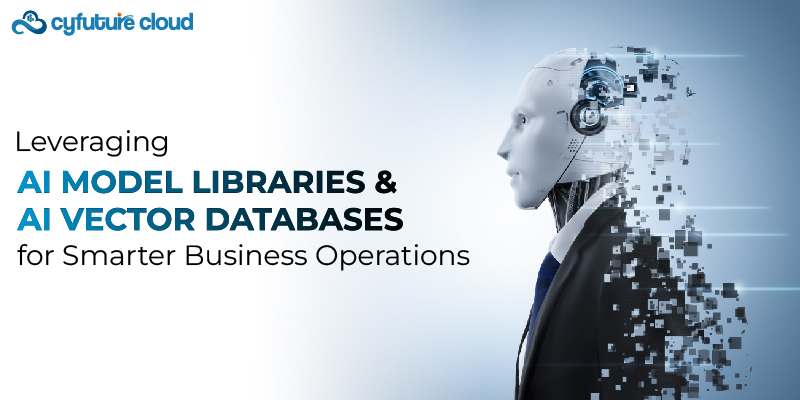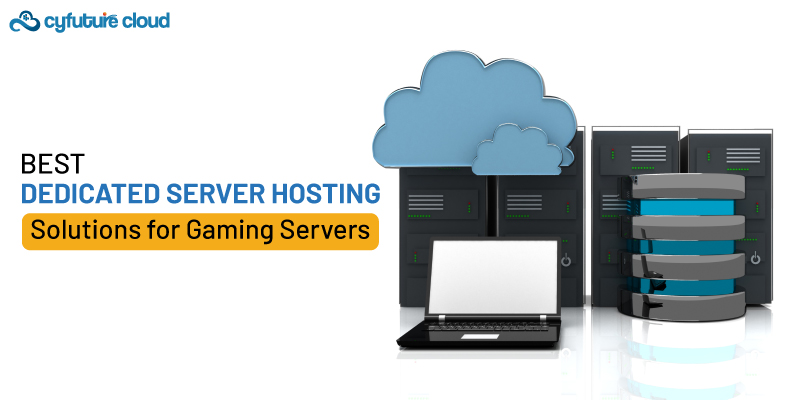Table of Contents
What is your take on when you hear the expression “bare metal”? As far as we might be concerned, it invokes pictures of something substantial, columns upon lines of servers associated with vivid links, with uproarious fans turning and locked away in a cellar or cloud centre.
As an Ambassador for the best cloud services in India, We’ve invested a large portion of my energy a lot higher up in the stack, at “level 7” (application) and at “level 8” (individuals). We’ve become acclimated with utilizing APIs and apparatuses like Terraform to get a figure at whatever point we want it. One of the characterizing portions of my profession has involved convincing individuals to disregard servers.
So what does the bare metal server have to do with “cloud-local,” and assuming that you’re new to this space, what is it that you want to be aware of it?
Cloud-Native Horizon
With regards to sending a piece of code, suppose a REST API — there’s nothing more straightforward than going to your AWS dashboard. Glueing the code into a message box and seeing your code execute with per-second charging and autoscaling from AWS Lambda. The general connection point for Lambda capacities has changed very little since its beginning, making it a somewhat steady stage to work with.
AWS Lambda is a SaaS item, which is a shut source, so assuming that you get stressed over the gamble of getting gotten into a solitary merchant, you might be checking Kubernetes out. Kubernetes, rather than AWS Lambda, permits transportability between mists by utilizing Docker or OCI-design holder pictures. When bundled in a picture and pushed to a vault, your code can be moved between Kubernetes bunches with no sweat. Assuming you appreciate involving oversaw items for the diminished support trouble, there are a lot of Kubernetes administrations accessible that are fast and simple to set up.
One of the disadvantages of a stage like Kubernetes is that it changes at the pace of bunches. Between every minor delivery, you might see breaking changes and need to rework any incorporations you have, also the outsider apparatuses and code age devices, which change at a comparable rhythm. Therefore, oversaw mists like Amazon EKS frequently run a few deliveries behind the local area.
Cloud-Native Computing
The most well-known programming in the Cloud Native Computing Foundation (CNCF) centres around the high level of the stack. Kubernetes was the main venture in the establishment and a considerable lot of the resulting projects are integral to it — at a functional level, or an authoritative one. Instruments like Prometheus and AlertManager increment functional proficiency and consider checking our many administrations. NATS gives rapid informing across local organizations and the web. Linkerd fabricates a lattice between holders to add measurements, strategies, and start to finish encryption.
As a specialist and maintainer of a famous Serverless undertaking, I frequently get told “however there are servers in serverless.” It’s practically similar to what they figured I didn’t have the foggiest idea. For my purposes, serverless has generally been about the engineer’s concentration: it’s not necessary to focus on equipment specs and organization VLANs, but on APIs. Thinking as far as APIs is the cloud-local way.
Likewise, bare metal servers are the substrate for Kubernetes, and for all cloud-local applications, whether got to straightforwardly, using a hypervisor or through an IaaS supplier’s API.
You ought to know that “they are in there someplace,” and for some, that is the extent to which it needs to go except if you have a particular requirement for them. A few organizations like Cherry Servers, AWS and Packet give a decent harmony between the benefits of bare metal disengagement and execution, and the strong APIs normally connected with VMs.
Until the end of the post, kindly accept that we’re discussing independent bare metal.
Bare Metal Server
With bare metal: what you see is what you get, straightforwardly. There is no befuddling showcasing terms like “serverless,” rather you get GBs of RAM, Gbps of organization data transfer capacity and GHz of CPU. That is very reviving, and it’s likewise something that hasn’t changed particularly since its commencement.
Close to 20 quite a while back I worked with bare-metal PCs every day at my school. I assisted the organization administrator staff by introducing Operating Systems onto i386 and i486 and more current PCs with Intel Pentium processors. The machines in those days had hard plates, RAM, network cards, and capacity, very much as they do today.
We had around five labs with 30 computers+ in each and some of the time that would include strolling up with a CD-ROM and reinstalling the working framework, yet at different times it would include booting the PC over the organization to remotely send a picture to it. This was substantially more versatile and took significantly less time than strolling around with a modest bunch of CDROMs.
That is where everything begins with bare metal, with the working framework, and whenever it has been introduced, you most likely will not have the option to differentiate between it and an EC2 Virtual Machine running on AWS.
I referenced that Kubernetes moves at a somewhat fast speed. It just so happens, the equipment doesn’t. We’re utilizing similar devices and innovations to boot frameworks on the organization that I was utilizing in lab 20 a long time back.
Bare Metal Glossary
Similarly, as Kubernetes and Cloud have their arrangement of language, bare metal has its wording. I’ve placed together a fast glossary on ideas and instruments:
Network Card
Where you truly associate a PC to an organization with a link. This might be copper, or in certain occurrences fibre optic. A few PCs have more than one organization card or port.
Management Port
this is a server-explicit idea. For effectiveness, directors need to oversee PCs from a distance without connecting a console and mouse.
Intelligent Platform Management Interface (IPMI)
The executive’s interfaces will not be more than a seller explicit and are gotten to over the organization involving a client as a Java interface.
Wake on Lan (WoL)
As opposed to permitting remote administration WoL can be utilized to remotely turn on a PC.
PXE (Preboot Execution Environment)
Used to boot PCs over a local network with just an organization card being required. iPXE can be utilized to expand a current PXE firmware utilizing TFTP or can be blazed to straightforwardly some organization cards.
iPXE
A more current open-source network booting firmware likewise takes into account booting over the HTTP and the web.
Netbooting
Booting from the organization implies that you don’t require actual admittance to a PC to arrange it or introduce a working framework.
DHCP
Allocating an IP address and other metadata like the essential DNS server to an organization interface
TFTP (trifling document move)
a UDP-based record server utilizes for bringing firmware to boot over the organization.
NFS (Network File System)
NFS is acknowledging filesystems that use net booting or record sharing to permit a Linux PC to work without its plate. Sadly, NFS isn’t viable with the overlay filesystems that are utilized with holders
iSCSI (Internet Small Computer Systems Interface)
An option in contrast to NFS which gives block-level gadgets rather than an arranged filesystem. You can organize the plate any way you like, with an ext4 filesystem and, surprisingly, run Docker.
Thin Client
Projects like the Linux Terminal Server Project LTSP permit you to transform any PC into a slender client with next to no local stockpiling required. This could be helpful for IoT gadgets like the Raspberry Pi which need to depend on streak capacity that has a generally short lifetime before it breaks down
Operating System
Whether conveying Windows, Linux, or something different. The working framework ordinarily must be introduced by utilizing an intelligent UI, CLI, or using a predefined arrangement.
Not all bare metal is equivalent. Shopper hardware like a workstation, home PC, an Intel NUC, or a Raspberry Pi is probably not going to accompany an administration port for IPMI.
Netbooting Example
Here is an example work process for booting a PC over the organization:
- The bare metal server is turned on.
- The organization card endeavours to boot over the organization utilizing PXE.
- A DHCP demand is sent for an IP address.
- A DHCP reaction is gotten with an IP and a smidgen of where to search for boot firmware.
- The PXE interaction presently brings the firmware from the TFTP server and burdens it.
By then a filesystem might mount over the systems administration utilizing NFS and a working framework will run from a distance, or an impermanent climate will utilize to introduce an OS to the nearby framework. On an ensuing boot, the hard plate will utilize to stack the OS.
For what reason Do We Need Bare-Metal Provisioning Tools?
I as of late asked my organization on Twitter what their #1 bare-metal provisioning instruments were. There were various responses, with gravity around a bunch of 5-10 activities with some of them being fresher, and others more settled.
It would seem while bare metal and the low-level devices like DHCP, TFTP and NFS haven’t changed a lot north of 20 years, individuals are attempting to make them simpler to mechanize. Numerous server farms contain heterogeneous equipment. Some with RAID exhibits, some without, some with one plate, and some with two, alongside fluctuating firmware and capacities.
Provisioning apparatuses need to assist us with:
Services
Programming administrations (or servers) that give DHCP, TFP, NFS, HTTP, etc.
Inventory
For posting and gathering servers alongside their capacities.
Image Store
A store of OS pictures fit to deploy to PCs over the organization. These pictures frequently alter, so might work with an apparatus like Packer.
Delivery
Anchoring together the heritage instruments to make a protected method for introducing a working framework. A few undertakings allude to this as a “work process,” while others utilize a state machine.
The most well-known apparatuses assist with computerizing the different devices we took a gander at in the example work process. Above: PXE, DHCP, TFTP, NFS, hard-circle arrangement, and OS establishment. Once introduced, a Kubernetes group can bootstrap.
However, these devices intend broadly useful. When your Operating System introduce, an administration apparatus like SSH, Ansible, devices to raise a Kubernetes bunch. Thus we close the circle on bare metal versus Kubernetes. Models include:
Metal Stack
“We accept Kubernetes runs best on bare metal. We assemble an API to oversee bare metal equipment and Kubernetes in addition.”
Metal³
“bare Metal Host Provisioning for Kubernetes” — with ClusterAPI support and worked with Ironic.
Of the Kubernetes devices referenced, some go above and beyond and embrace a reflection called Cluster API (CAPI). CAPI expects to transform a bunch of VMs or servers into a useful Kubernetes group.
The Cluster API is a Kubernetes venture to bring decisive, Kubernetes-style APIs to group creation, design, and the board. It gives discretionary, added substance usefulness on top of centre Kubernetes to deal with the lifecycle of a Kubernetes group.
More on Cluster API:
- A rundown of Cluster API suppliers.
- An illustration of the Docker supplier in YAML.
Conclusion
While considering present-day cloud computing there’s a range of control and transportability. On one side, we have AWS Lambda, a shut source SaaS item that is profoundly restrictive, and offers little control, yet high utility and productivity. Climbing, we have Kubernetes which brings along scale-out superpowers however at an expense. Lastly, we have bare-metal servers that should oversee mindfully with expert instruments. I feel that the delivery of the two is fascinating, which is the reason we amp up for apparatuses like Metal³. Metal Stack plans to streamline the experience of going from heterogeneous bare metal equipment to Kubernetes.
Recent Post
Send this to a friend

 Server Colocation
Server Colocation CDN Network
CDN Network Linux Cloud Hosting
Linux Cloud Hosting Kubernetes
Kubernetes Pricing Calculator
Pricing Calculator
 Power
Power
 Utilities
Utilities VMware Private Cloud
VMware Private Cloud VMware on AWS
VMware on AWS VMware on Azure
VMware on Azure Service Level Agreement
Service Level Agreement 



















